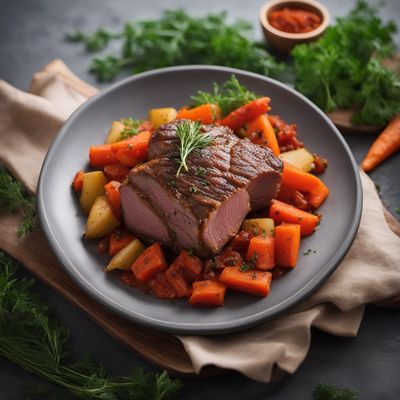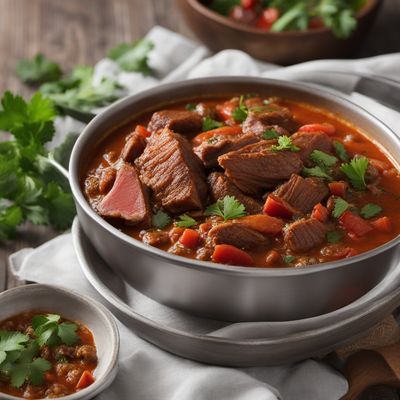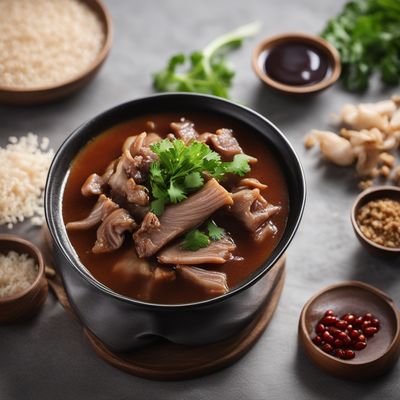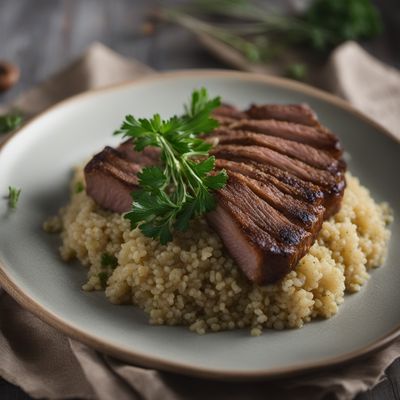
Ingredient
Pig heart
The Versatile Organ: Pig Heart
Pig heart is a muscular organ that is lean and dense in texture. It has a rich, iron-like flavor with a slightly gamey undertone. The meat is firm and can be tough if not cooked properly. Its appearance is similar to other animal hearts, with a deep red color and a distinct shape.
Origins and history
Pig heart has been consumed for centuries and is a staple in many traditional dishes. It has been a part of culinary traditions in countries like China, Mexico, and Scotland. In Chinese cuisine, pig heart is often stir-fried or used in hot pot dishes. In Mexico, it is commonly used in tacos or stews. In Scotland, it is a key ingredient in haggis, a traditional dish made with sheep's heart, liver, and lungs.
Nutritional information
Pig heart is a good source of protein, iron, and vitamin B12. It is also low in fat and calories, making it a nutritious choice for those looking to incorporate organ meats into their diet.
Allergens
May contain allergens for individuals with pork allergies.
How to select
When selecting pig heart, look for fresh, firm meat that is free from any discoloration or strong odors. The surface should be moist and not slimy. Avoid purchasing if there are any signs of spoilage or if the meat feels excessively soft.
Storage recommendations
To maintain freshness, pig heart should be stored in the refrigerator at a temperature below 40°F (4°C). It is recommended to use it within 2-3 days of purchase. For longer storage, it can be frozen for up to 3 months. It is important to wrap it tightly in plastic wrap or place it in an airtight container to prevent freezer burn.
How to produce
Pig heart is typically not produced by amateur cooks due to the complexity of raising pigs and the specialized knowledge required for butchering. It is best to purchase pig heart from a reputable butcher or meat supplier.
Preparation tips
Before cooking pig heart, it is important to remove any excess fat, connective tissue, and blood vessels. It can be marinated to enhance its flavor and tenderness. Pig heart can be grilled, pan-fried, or braised to achieve a tender and flavorful result. It is commonly used in stews, curries, or as a filling for pies.
Substitutions
Beef heart can be used as a substitute for pig heart, as they have a similar texture and flavor profile. However, the taste may vary slightly. If pig heart is not available, chicken hearts can also be used as a substitute in certain recipes.
Culinary uses
Pig heart is commonly used in dishes such as stir-fries, stews, curries, and pies. It can also be grilled and served as a main course. In Chinese cuisine, it is often paired with vegetables and sauces in stir-fry dishes. In Mexican cuisine, it is used in tacos or added to hearty stews. In Scottish cuisine, it is a key ingredient in haggis, a traditional dish served on Burns Night.
Availability
Pig heart is commonly available in countries with a strong tradition of consuming organ meats, such as China, Mexico, and Scotland. It can also be found in specialty butcher shops or ethnic markets in other regions.
More ingredients from this category

Pig stomach
The Savory Delicacy

Pig tongue
A Delicacy Worth Exploring

Pig marrowbone
"Savor the Richness: Exploring the Delights of Pig Marrowbone"

Pig tail
"Savor the Delightful Twist: Exploring the Culinary Wonders of Pig Tail"

Pig trotters and feet
"Savory Delights: Exploring the World of Pig Trotters and Feet"

Pig head
The Versatile Delicacy: Pig Head
Recipes using Pig heart

Caltaboș with a Twist
Savory Romanian Caltaboș: A Hearty Delight

Puerto Rican Candinga Stew
Savory Delight: Puerto Rican Candinga Stew

Pig's Organ Soup
Savory Delight: Singaporean Pig's Organ Soup

Traditional British Faggots
Savory Delights: Classic British Faggots with a Twist

Ivorian-style Organ Soup
Savory Delight: Ivorian-inspired Organ Soup

Spanish Chanfaina with a Twist
Savory Spanish Chanfaina: A Hearty Delight